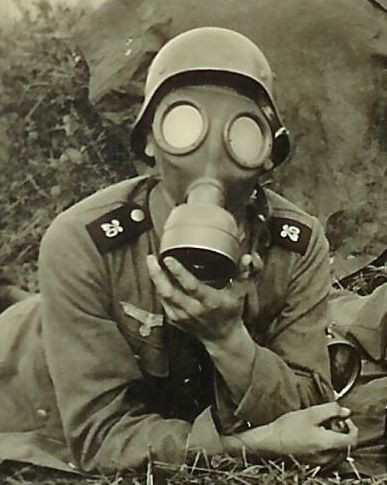Noxious Chlorine Gas Accidentally Synthesized by Pub Worker Trying To Clean Urinal

A British pub worker nearly died after he accidentally synthesized a fatally toxic gas while cleaning a urinal. The Surrey Comet reports that Jason Smith, assistant manager of an Ashtead pub, made the mistake of applying bleach and descaler simultaneously, re-creating the noxious chlorine mixture that killed thousands of soldiers during World War One.
“The chemicals combined and started pumping out toxic vapor. When I saw vapor coming out I left because I knew it was not very good,” said Smith, speaking to The Surrey Comet.
The unwitting chemist realized that the daily chore had gone horribly awry when he tried to “air out” the toxic fumes by cracking a window and wedging the door ajar.
“When I bent down close to the ground, my eyes were stinging, my lungs were burning and I nearly passed out,” he said, adding that the moment he realized the extent of his janitorial slipup, he immediately evacuated the pub and notified the local fire department.
“I realized what was happening very quickly and sealed off the section. I was about to go in there with a bucket of water when the fire brigade turned up. They took in a giant fan to blow the vapors away,” he said. “I knew from household chemicals you could create mustard gas, but I didn’t realize it was the combination I had in my hands at the time.”
The fatal chemistry of Smith’s mixture resulted from the interaction between bleach and hydrochloric acid, which is commonly found in descaling agents. The lethal compound is easy to synthesize (evidently), and was commonly used in chemical warfare strategies during World War I.
Smith, who knew very little about the reactive capacity of the cleaning chemicals, suffered chest pains for days following the incident and admittedly felt “pretty stupid” about the whole thing.
“He thought he was doing the right thing pouring the bleach and descaler in the toilet. If he had stayed in there we would have been carrying him out rather than him stumbling out,” said Jon Bennett, crew manager of the responding team of firefighters.
To avoid similar situations, health officials recommend that people not only read the product’s instruction label, but also consult chemical hazard guides before using any high-toxicity agent for cleaning purposes. An example is the Center For Disease Control’s (CDC) NIOSH Pocket Guide to Chemical Hazards.



























